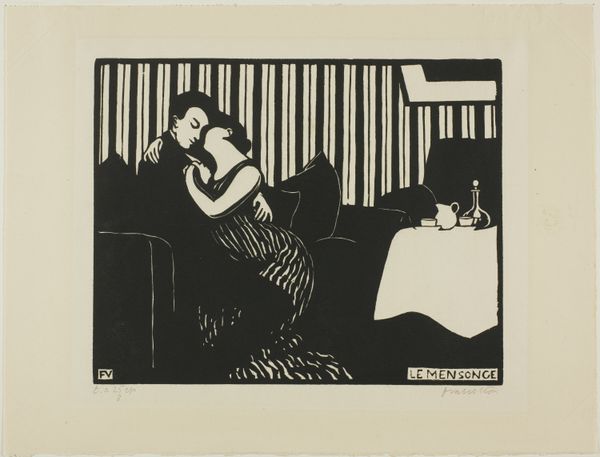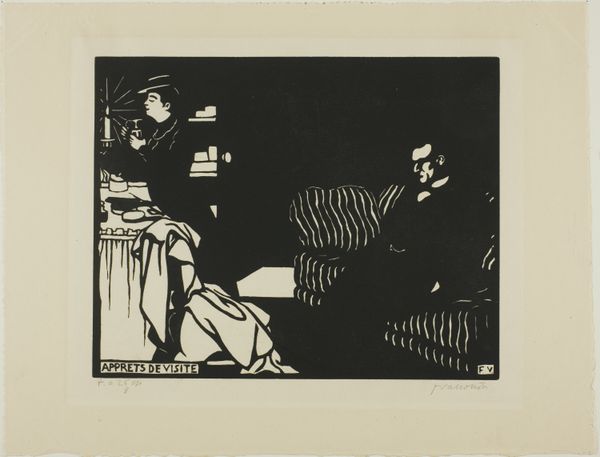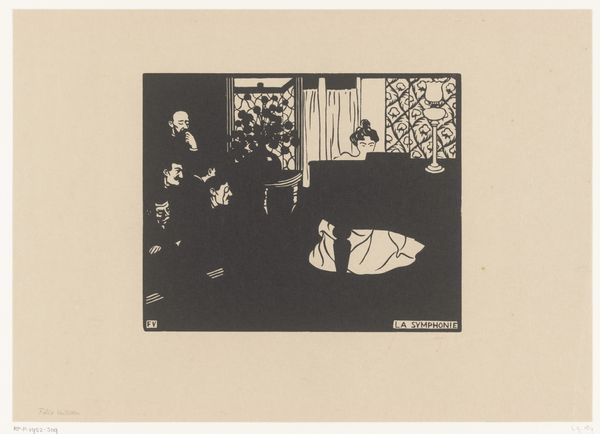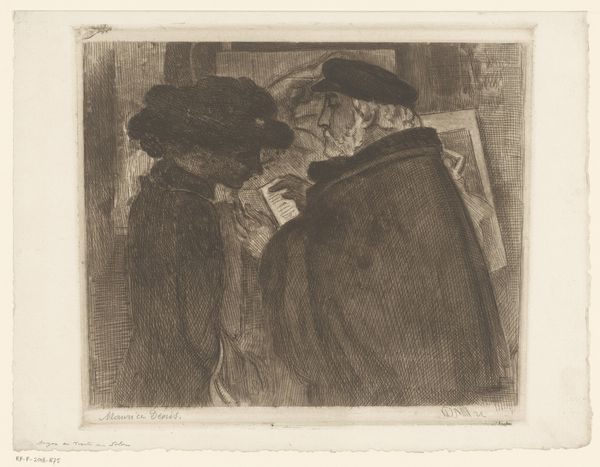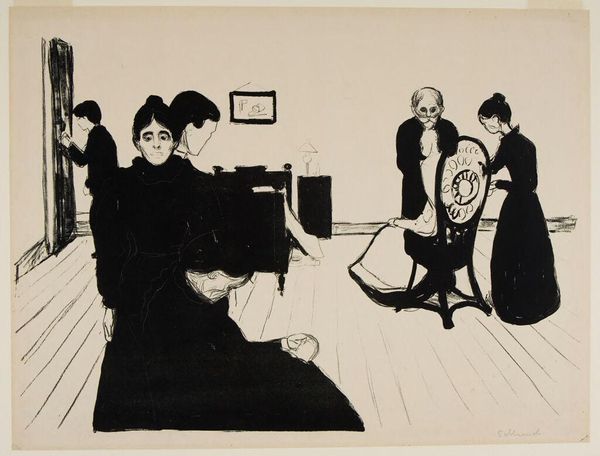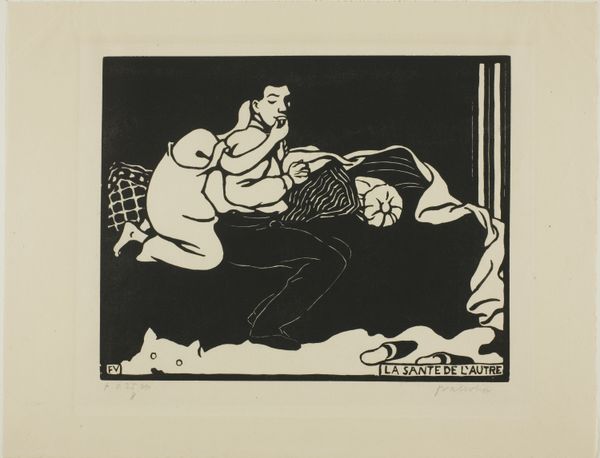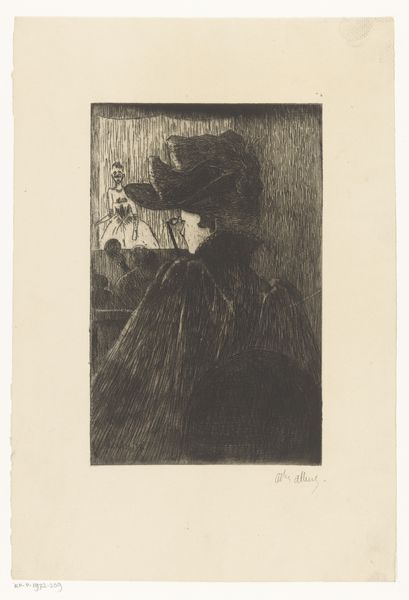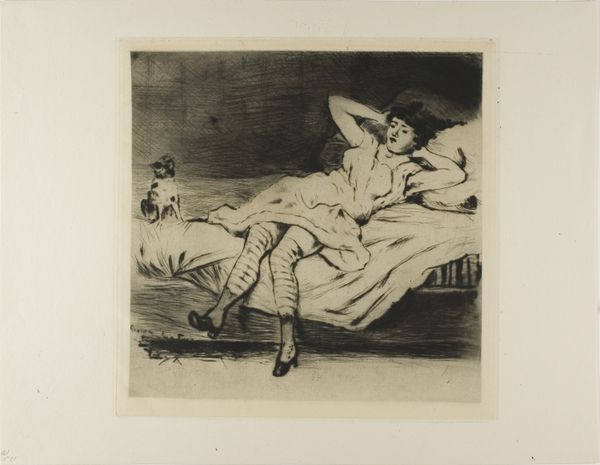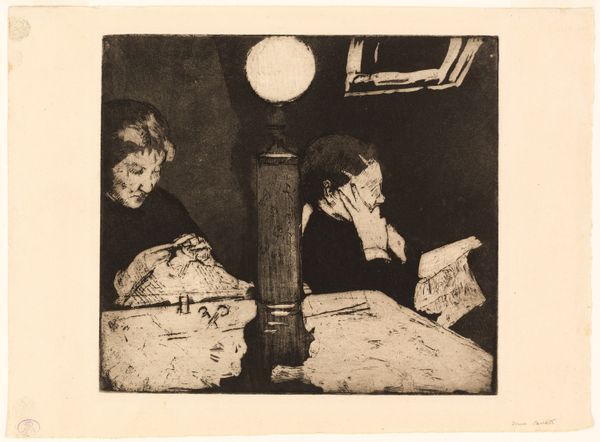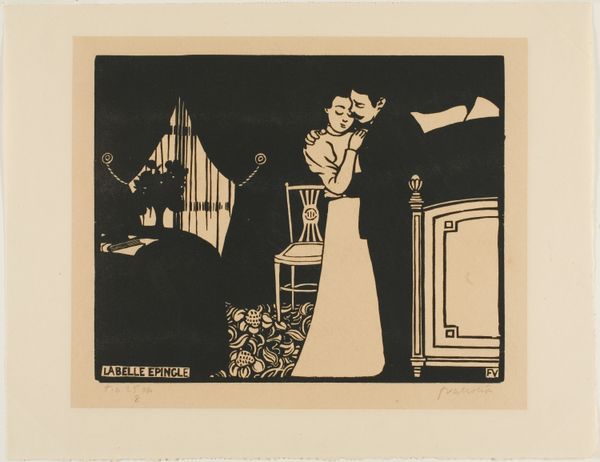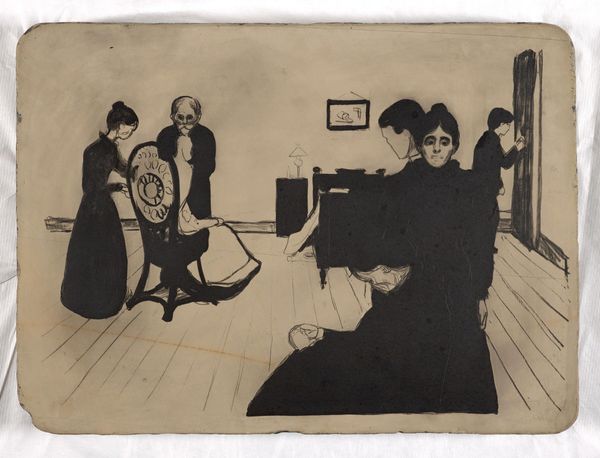
drawing, print, intaglio, paper, woodcut
#
portrait
#
drawing
#
art-nouveau
# print
#
intaglio
#
paper
#
linocut print
#
woodcut
#
genre-painting
#
monochrome
Dimensions: 178 × 225 mm (image); 250 × 325 mm (sheet)
Copyright: Public Domain
Curator: This is "The Triumph," plate two from the series "Intimacies" created by Félix Edouard Vallotton in 1898, now residing at the Art Institute of Chicago. It’s a stark, powerful woodcut. Editor: My immediate reaction is unease. The composition is so unbalanced; the solid black mass dominates, creating a sense of oppression almost. Curator: Oppression is an interesting choice. Looking at Vallotton's work within the context of fin-de-siècle anxieties, one can argue that the rigid formality imposed upon women—seen in the figure's posture—becomes a symbol of that oppression. Her apparent triumph may just be conformity. Editor: So the 'triumph' might be more of a performance of societal expectation than an authentic victory? I do notice the figure to the right is almost completely obscured in darkness, bent over. A stark contrast to the woman on the left who stands rigidly in stark monochrome silhouette. The other seems devastated by this “triumph”. Curator: Precisely. Vallotton often explored the hidden tensions within bourgeois relationships. This print can be interpreted as a critique of patriarchal structures that demand women's submission while simultaneously stifling their emotional expression, do you think her positioning might further that claim? Editor: Absolutely. It feels like she’s in a cage, perhaps an invisible one created by those social constraints. And it begs the question: whose triumph is this really? The figure on the right seems defeated; perhaps the victor here is an outside societal expectation or the other figure has been subjugated under her partner? It resonates even today with how many social narratives demand women “succeed” according to predetermined standards. Curator: I completely agree. It's fascinating how Vallotton uses the simplicity of the woodcut medium to amplify these complex ideas, this use of monochrome allows you to emphasize stark divides. Editor: It makes you wonder how Vallotton viewed this "triumph," I suppose! Curator: It's certainly food for thought and allows for some contemporary questions about relationships, isn't it?
Comments
No comments
Be the first to comment and join the conversation on the ultimate creative platform.
